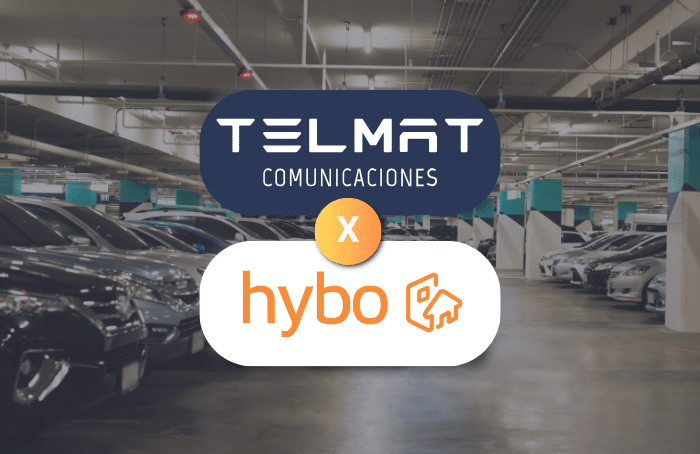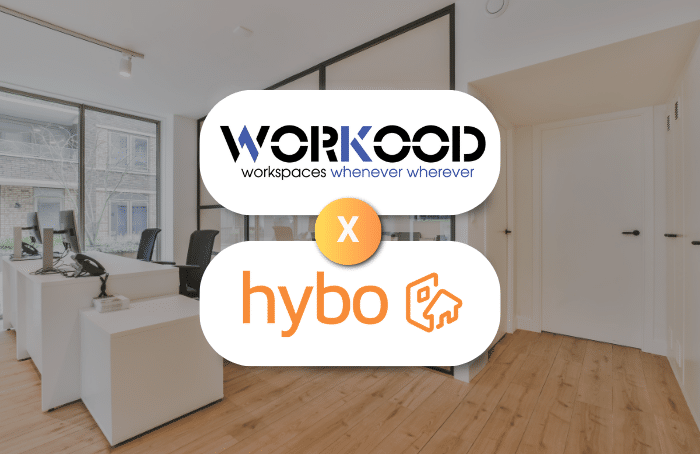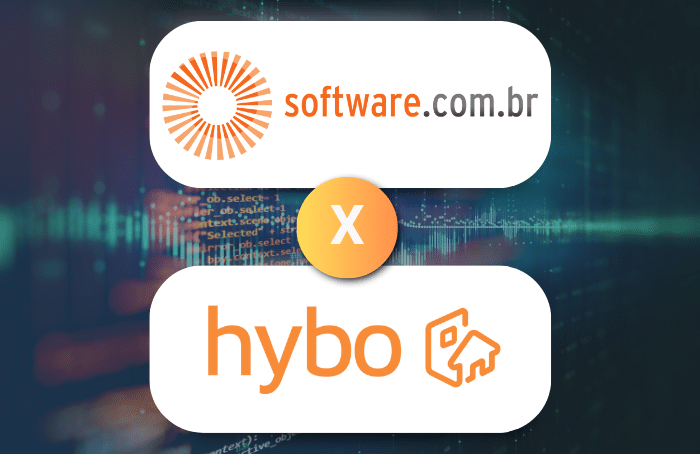Saving hybrid work.
With the demise of Covid-19’s impact on our society, and as a consequence, the progressive return of employees to their workplaces, many companies find themselves in a strategic situation that may be a turning point for their future work models. the big question that many companies are asking themselves is:
Do we do away with hybrid work or do we establish it for good?
Many expert voices have spoken out over the past few months, with some arguing for the benefits of hybrid working and others debunking its effectiveness. However, these last two years, where hybrid and remote work has occupied 70% of global jobs according to the Workplace Analytics study, have helped us to extract metrics and data that show that it can be advantageous for both the company and the worker, and also for our planet.
Implementing hybrid work requires a preliminary study, followed by monitoring and management in order to evaluate and support employees in this new environment. Fortunately, solutions such as hybo integrate the management and reservation of corporate spaces for hybrid work models in a single tool.
We have prepared for you, a study on savings in hybrid work that aims to make us reflect on the suitability of the implementation of hybrid work in the company from an economic point of view, taking into account the 4 major factors in which hybrid work directly affects the reduction of costs arising from the activity of the company. In each of the factors, more concepts are involved that are grouped within it.
The following is a brief summary of the 4 axes on which the study is based and which will allow us to see the business savings in the implementation of hybrid work from different points of view.
Saving hybrid work company
Over the last few months we have heard that hybrid working is a solution designed only for the employee and without any benefit for the company. However, this statement does not take into account the savings for the company if its employees work remotely or hybrid a few days a week.
Companies are also beneficiaries of the hybrid work model, but for this, it is essential to have a space manager such as hybo, which allows employees to correctly manage their workspaces while the company can control and analyse their adaptability at all times.
According to the latest Workplace Analytics report published in January 2021, the average savings in real estate with full-time teleworking is 10,000 dollars per year per employee (9,172.88 €). In this first section we analyse the savings in expenses derived from the activity of workers within the company, understanding that these are derived from the worker’s stay in the offices or carrying out their daily tasks within the company.
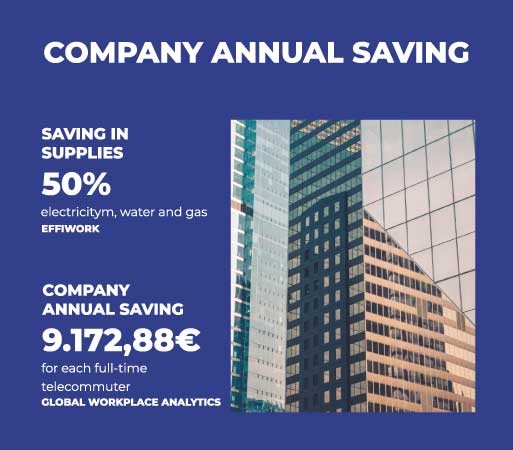
In our report you can see the cost-effectiveness of hybrid working and its savings on Supplies, Activities (Per Diems, Visits, Events) and Workspaces (Rental, Maintenance, Cleaning, Parking, Dining).
Saving hybrid labour worker
The advantages of hybrid working not only benefit companies, but also have an impact on employees, saving them between €2,000 and €4,000 per year, according to EffiWork.
This saving is determined by various costs that were usually borne by the employee due to the fact that he/she had to come to the office every day.
It is estimated that the savings for the employee will be between 20-80% in commuting costs and 50-60% in food costs. This situation is already a reality in countries such as the United States, where a study by the work platform Upwork has published that its citizens are saving a total of 630 million euros a day thanks to teleworking.
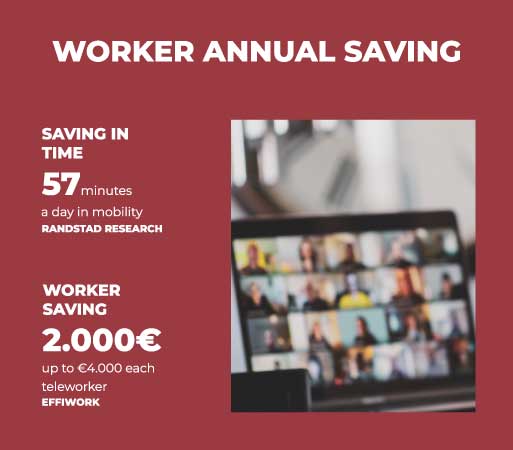
In our report you can see the cost-effectiveness of hybrid work and its savings in commuting, mobility, food, clothing and quality of life.
Improvements of hybrid work in team management
Implementing hybrid working also has benefits that are difficult to quantify for the company but are hugely relevant. This change in corporate culture, done correctly, will have a direct effect on increasing employee productivity, reducing absenteeism, employee engagement and attracting and retaining talent.
Companies must offer their employees this working model if they want to remain competitive and succeed in retaining and attracting talent. Implementing hybrid working is not an option, it is almost a must.
Today, the most in-demand jobs are those that allow for hybrid working models and the main reason for leaving, after salary, is job flexibility.
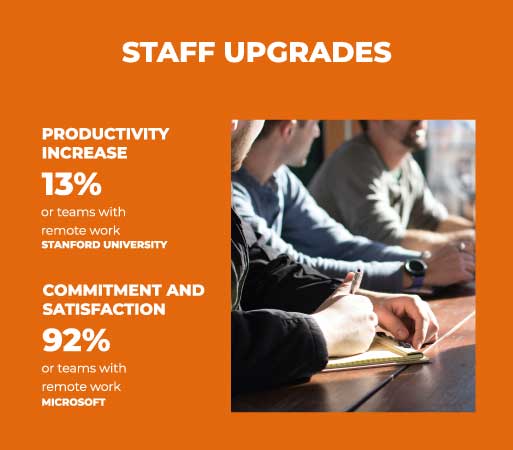
In our report you can see the cost-effectiveness of hybrid working and its savings in Absenteeism, Health, Satisfaction, Recruitment and Turnover, Productivity and Training.
Improvements of hybrid work in the Environment
According to data from Global Workplace Analytics, the US economy loses a total of 78 billion dollars as a result of traffic jams. In addition, traffic jams produce up to 26 million additional tonnes of greenhouse gases in the United States.
Another of the important data to take into account and which signifies progress towards a more eco-responsible economy, is the reduction of CO₂ which has been reflected in the times of the pandemic where teleworking was more integrated. From the study conducted by the Carbon Trust and commissioned by the Vodafone Institute for Society and Communication, we can extract the following data from the compromisorse.com article: For every employee who teleworks, 599 kg of CO₂ can be saved by teleworking at a rate of 2.8 per week. The study predicts that around 6.52 million jobs (34%) in Spain will be done remotely with an average of 2.8 telework days per week.
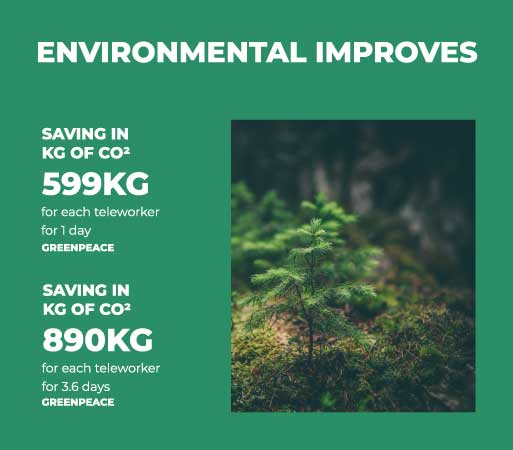
We invite you to download our full report to analyse the savings and improvements that hybrid working brings. Discover the data and metrics for each concept and implement hybrid working with hybo.







